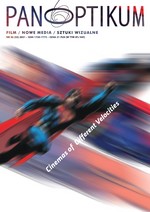Loop Structures in Film (and Literature): Experiments with Time Between the Poles of Classical and Complex Narration
Loop Structures in Film (and Literature): Experiments with Time Between the Poles of Classical and Complex Narration
Author(s): Matthias BrütschSubject(s): Film / Cinema / Cinematography, Theory of Literature
Published by: Uniwersytet Gdański
Keywords: puzzle films; nonlinear plot; loop structure;
Summary/Abstract: Among the many innovations complex or “puzzle” films have brought about in the last three decades, experiments with narrative time feature prominently. And within the category of nonlinear plots, the loop structure – exemplified by films such as Repeaters (Canada 2010), Source Code (USA/France 2011), Looper (USA/China 2012) or the TV-Series Day Break (USA 2006) – has established itself as an interesting variant defying certain norms of storytelling while at the same time conforming in most cases to the needs of genre and mass audience comprehension. In the first part of my paper, I will map out different kinds of repeated action plots, paying special attention to constraints and potentialities pertaining to this particular form. In the second part, I will address the issue of narrative complexity, showing that loop films cover a wide range from “excessively obvious” mainstream (e.g. Groundhog Day, USA 1992; 12:01, USA 1993; Edge of Tomorrow, USA/Canada 2014) to disturbing narrative experiments such as Los Cronocrimenes (Spain 2007) or Triangle (Great Britain/Australia 2009). Finally, a look at two early examples (Repeat Performance, USA 1947 and Twilight Zone: Judgement Day, USA 1959) will raise the question how singular the recent wave of loop films are from a historical perspective.
Journal: Panoptikum
- Issue Year: 2021
- Issue No: 26 (33)
- Page Range: 83-107
- Page Count: 25
- Language: English

